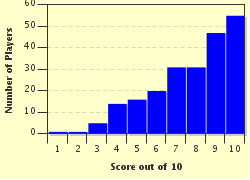Quiz Answer Key and Fun Facts
1. Our first candidate is an English physician who was ostracised from the scientific community for his theory on the circulation of blood. Which famous Harvey was this?
2. Which of the following physicists' ideas on a relationship between voltage, resistance and electric current was not well received at the time but is now a basic law of physics. This scientist now has his name used as a unit in this field.
3. The front page headline in "The New York Times" on the 12th of January 1920 read "Believes Rocket Can Reach Moon". Which scientist was this article about?
4. Which of these men was ridiculed over his theory that malaria and yellow fever were transmitted by mosquitoes, not miasma as previously believed?
5. Galileo was the first astronomer to claim actual evidence that the Earth was not the centre of the universe, but which of these men was the first to broach this idea of heliocentrism to the scientific community?
6. Alfred Wegener spent most of his life as a meteorologist in the Polar Regions but he is better remembered today for his theories related to which of the following areas?
7. Our next contender, Stanley Prusiner, is within recent history with a 1980s discovery that was ridiculed for over a decade. His work introduced the term 'prion' into scientific language. What disease was he trying to explain?
8. Subrahmanyan Chandrasekhar went from being virtually blackballed for his 1930 idea to receiving the 1983 Nobel Prize in Physics for his theory relating to which phenomena?
9. The Wright brothers' famous flight took place at Kitty Hawk in 1903 but they then spent the next five years being ridiculed by their own countrymen. Which country hosted their 1908 flight that led to their vindication?
10. Many scientists refused to accept new breakthroughs in medicine leading to countless losses of lives. Three of the following are famous for the concept of 'germ theory' of disease and the need for basic hygiene. Which one was NOT prominent in this field?
Source: Author
Midget40
This quiz was reviewed by FunTrivia editor
bloomsby before going online.
Any errors found in FunTrivia content are routinely corrected through our feedback system.

